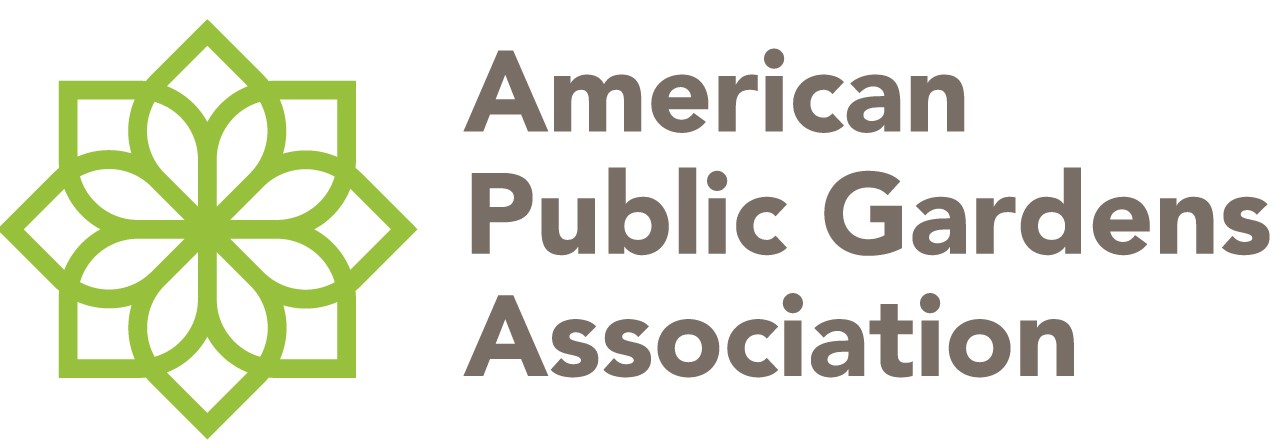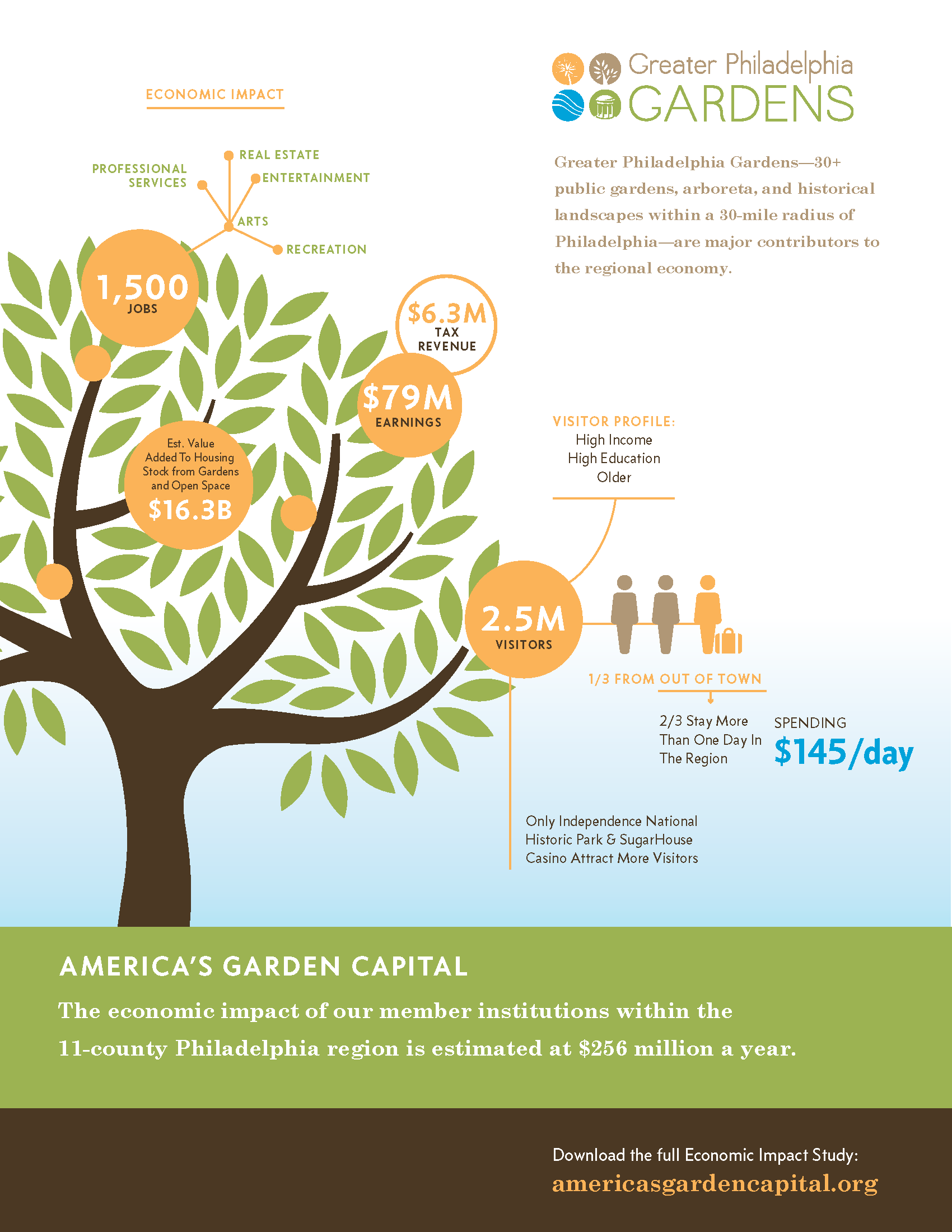Results of new study show how public gardens enrich the regional economy
A new report commissioned by Greater Philadelphia Gardens (GPG) shows that the Philadelphia area’s public gardens, arboreta, and historic landscapes generate substantial economic benefits for the region. GPG, made up of more than 30 public gardens in a 30-mile radius, has called the region “America’s Garden Capital.”
According to the report, compiled by the Philadelphia-based consulting firm Econsult Solutions:
- The economic impact of member gardens within the 11-county Philadelphia region is $256 million a year.
- These public gardens support more than 1,500 jobs—with total earnings of $79 million—and generate $3.6 million a year in business, sales, and income tax revenue in Pennsylvania. While the majority of the jobs supported by the operations of the gardens are in the arts, entertainment, and recreation sectors, there are many jobs indirectly supported in industries including real estate and professional services.
- The capital investment the gardens initiate enhances regional tourism and recreation, and stimulates the local economy. Over the last three years, GPG members have spent approximately $116 million on construction projects within their gardens. Much of this total is currently being spent at Longwood Gardens to replace 83-year-old fountains and add new water choreography. The investment, labeled “New Heights: The Fountain Revitalization Project,” is set to be completed by this spring. Other recent projects include the renovation of the house at the Winterthur Museum, Garden & Library, and the additions at Bartram’s Garden, which include the new Ann Bartram Garden and a mile-long hiking trail. The spillover impact from this spending ripples through a variety of sectors, including architectural and engineering services, truck transportation services, wholesale trade, processing, storage, transport and disposal, and retail services.
- These gardens collectively attract an estimated 2.5 million visitors annually – on par with some of the region’s most popular attractions (the Liberty Bell with 2.2 million visitors and Valley Forge National Park with 2.1 million visitors). Two-thirds of the gardens’ out-of-town visitors spend more than a day, and an average of $145 per day on food, accommodations and other expenses, in addition to what they spend at the gardens.
- Garden visitors tend to be of higher income and education, in comparison with the general population. Collectively, this visitor profile shows that the area’s gardens are playing an important role in attracting a highly valuable demographic to the region. Institutions like the members of Greater Philadelphia Gardens are crucial to the region’s ability to attract and entertain these visitors, and capture impacts broadly across the tourism sector.
“We have long felt that gardens brought significant economic benefits to the area,” said Matt Rader, president of the Pennsylvania Horticultural Society.“In addition to inspiring and relaxing us, there’s a real economic role for our region’s public gardens. This study shows how public gardens create jobs, support local businesses, influence property values, and contribute to overall economic development. Their value cannot be underestimated.”
“Each year, public gardens continue to grow their visitation and audience base,” says Casey Sclar, Executive Director of the American Public Gardens Association, representing more than 400 public gardens across the country. “Greater Philadelphia Gardens is an ideal model of a gardens collaborative, and the findings of this study will help other gardens to demonstrate their value.”
To produce the report, Econsult Solutions relied on data provided by the institutions, a survey of visitors to several of the gardens, and standard economic modeling techniques. The report will provide guidance and support to the gardens’ efforts to raise funds and increase audiences.
The full report is available at americasgardencapital.org/econ
Greater Philadelphia Gardens (“GPG”) is a consortium of more than 30 public gardens, arboreta, historical landscapes and supporting organizations located within 30 miles of Philadelphia. Since 1989, the consortium has jointly promoted and encouraged visitation to its member gardens, which represent one of the key components of the region’s leisure and tourism economy. The collective has branded the region “America’s Garden Capital” to reflect the breadth, quality and variety of public garden offerings available all year long in the region. Learn more at americasgardencapital.org.




